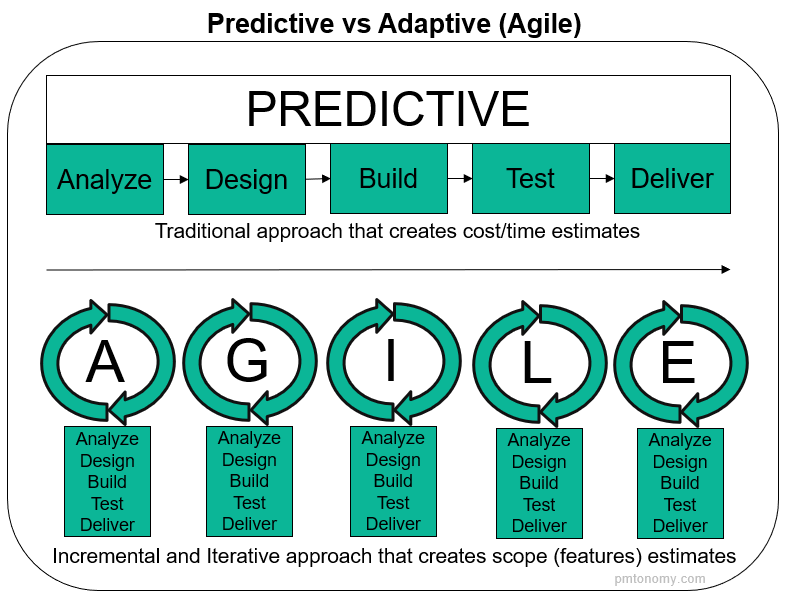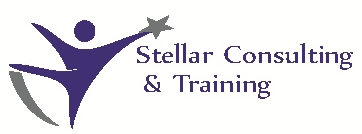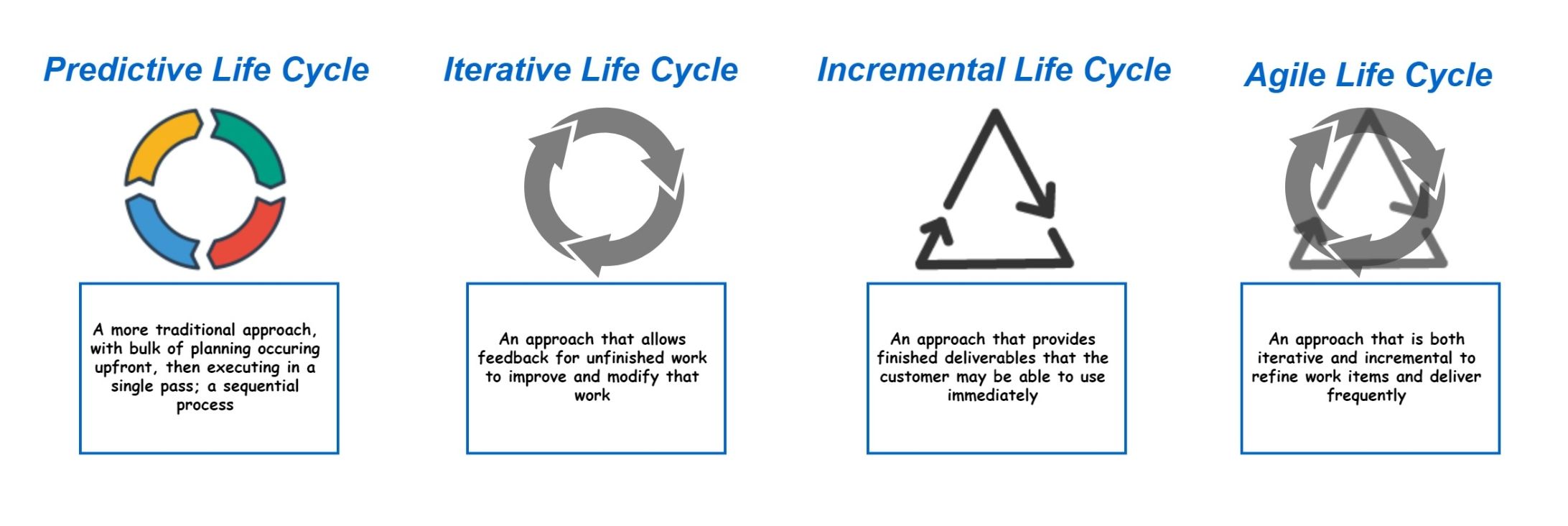If you are a project manager, you might have wondered which approach is better for your projects: predictive or adaptive. Predictive project management is based on planning the whole project in advance, defining the scope, schedule, budget and quality requirements, and executing the plan with minimal changes. Adaptive project management is based on embracing change and uncertainty, delivering value in small increments, and adapting to feedback and changing requirements.
Both approaches have their advantages and disadvantages, depending on the context and characteristics of the project. In this blog post, we will compare and contrast predictive and adaptive project management, and provide some guidelines on how to choose the best one for your situation.
Predictive Project Management
Predictive project management is also known as traditional, waterfall or plan-driven project management. It follows a linear and sequential process, where each phase of the project is completed before moving to the next one. The phases typically include initiation, planning, execution, monitoring and control, and closure.
Predictive project management assumes that the project scope and requirements are well-defined and stable from the beginning, and that the risks and uncertainties are low. It also assumes that the customer knows what they want and need, and that they will not change their mind during the project. Predictive project management focuses on delivering a single final product at the end of the project schedule, with high quality and reliability.
Predictive project management is suitable for projects that have:
- Clear and fixed scope and requirements
- Low complexity and uncertainty
- High predictability and stability
- Long duration and large size
- High cost of change
- Regulatory or contractual constraints
Some examples of projects that can benefit from predictive project management are:
- Construction projects
- Infrastructure projects
- Manufacturing projects
- Software projects with well-established technologies and standards

Adaptive Project Management
Adaptive project management is also known as agile, iterative or change-driven project management. It follows a cyclical and incremental process, where the project is divided into small units of work called iterations or sprints. Each iteration delivers a potentially shippable product increment that adds value to the customer. The iterations are short and frequent, usually lasting from one to four weeks.
Adaptive project management assumes that the project scope and requirements are vague and volatile, and that the risks and uncertainties are high. It also assumes that the customer does not know exactly what they want or need, and that they will change their mind during the project. Adaptive project management focuses on delivering value early and often, with high customer satisfaction and responsiveness.
Adaptive project management is suitable for projects that have:
- Unclear or changing scope and requirements
- High complexity and uncertainty
- Low predictability and stability
- Short duration and small size
- Low cost of change
- Innovation or experimentation goals
Some examples of projects that can benefit from adaptive project management are:
- Software projects with new or emerging technologies or markets
- Research and development projects
- Marketing campaigns
- Product development projects
How to Choose Between Predictive and Adaptive Project Management
There is no one-size-fits-all solution for choosing between predictive and adaptive project management. The best approach depends on several factors, such as:
- The nature of the project: its scope, complexity, uncertainty, duration, size, cost, quality, etc.
- The expectations of the customer: their needs, preferences, involvement, feedback, etc.
- The capabilities of the team: their skills, experience, collaboration, communication, etc.
- The environment of the organization: its culture, values, processes, tools, etc.
As a general rule of thumb:
- Use predictive project management when you have a clear vision of what you want to achieve and how to achieve it.
- Use adaptive project management when you have a vague idea of what you want to achieve but not how to achieve it.
However, keep in mind that these are not mutually exclusive options. You can also use a hybrid approach that combines elements of both predictive and adaptive project management. For example:
- You can use predictive project management for some phases or aspects of the project (such as planning or testing), while using adaptive project management for others (such as execution or design).
- You can use predictive project management for some parts or components of the product (such as hardware or architecture), while using adaptive project management for others (such as software or features).
- You can use predictive project management for some stakeholders or customers (such as regulators or sponsors), while using adaptive project management for others (such as end-users or testers).
The key is to find the right balance between planning and adapting, between control and flexibility, between certainty and creativity. By doing so, you can maximize the value of your projects for your customers and your organization.
Stellar Consulting & Training is offering the following 16-hour course covering the Fundamentals of Predictive and Adaptive Methods in Project Management.
Course Overview
Project management is a skill that can help you achieve your professional goals and deliver value to your organization. In this course, you will learn the basics of project management, such as how to define a project, plan its scope, schedule, and budget, and manage its execution and closure. You will also explore the best practices and standards that guide project managers across different domains and industries. By completing this course, you will gain the knowledge and confidence to initiate, plan, execute, monitor, control, and close any type of project.
Course Objectives
In this course, you will identify the elements of sound project management and apply the generally recognized project management practices to successfully manage or participate in projects. You will:
- Identify the key processes and requirements of project management.
- Initiate a project.
- Use a Predictive approach to plan for time and cost.
- Use an Adaptive approach to plan a project.
- Plan for project risks, communication, and change control.
- Manage the execution of a project.
- Close a project.
Target Audience
This course is designed for individuals in a variety of job roles whose primary responsibility is not project management, but who manage projects on an informal basis; who contribute as members of a project team; or who wish to incorporate project management practices into their personal work. It is also beneficial for anyone who is considering a career path in project management and desiring a complete overview of the field and its generally accepted practices.
This course does not aim to teach a specific project management method or framework, but rather to expose you to a range of approaches and best practices that you can adapt and apply to your own projects and context.
Course Outline
Module 1: Getting Started with Project Management
A: Identify the Characteristics of a Project
B: Identify the Project Approach
C: Identify the Leadership Roles in a Project
Module 2: Initiating a Project
A: Create a Project Scope/Vision Statement
B: Identify the Essential Skills for a Project Team
C: Identify the Risks to a Project
Module 3: Planning for Time and Cost in Predictive Projects
A: Create a WBS
B: Create a Project Schedule
C: Determine Project Costs
Module 4: Planning for Adaptive Projects
A: Create Epics and User Stories
B: Build a Product Backlog
C: Create an Initial Release Plan
D: Conduct a Sprint Planning Meeting
E: Replan the Project
Module 5: Planning for Project Risks, Communication, and Change Control
A: Analyze the Risks to a Project
B: Create a Communication Plan
C: Develop a Change Control Plan
Module 6: Managing a Project
A: Begin Project Work
B: Execute the Project Plan
C: Track the Progress of an Adaptive Project
D: Report Project Performance
E: Implement Change Control
Module 7: Closing a Project
A: Close a Sprint, a Release, or an Adaptive Project
B: Close a Predictive Project
C: Create a Final Report
Module 8: Using Earned Value Analysis

